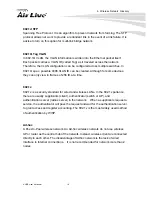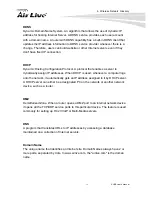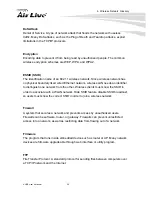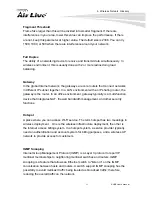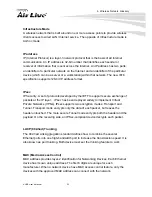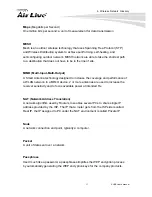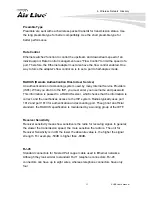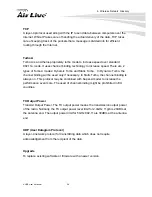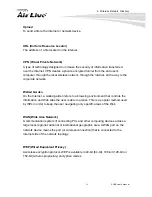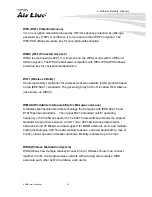
5. Wireless Network Glossary
X.USB
User’s Manual
30
WPA
(Wi-Fi Protected Access)
It is an encryption standard proposed by WiFi for advance protection by utilizing a
password key (TKIP) or certificate. It is more secure than WEP encryption. The
WPA-PSK utilizes pre-share key for encryption/authentication.
WPA2 (Wi-Fi Protected Access 2)
WPA2 is also known as 802.11i. It improves on the WPA security with CCMP and
AES encryption. The WPA2 is backward compatible with WPA. WPA2-PSK utilizes
pre-share key for encryption/authentication.
Wi-Fi (Wireless Fidelity)
An interoperability certification for wireless local area network (LAN) products based
on the IEEE 802.11 standards. The governing body for Wi-Fi is called Wi-Fi Alliance
(also known as WECA).
WiMAX (Worldwide Interoperability for Microwave Access)
A Wireless Metropolitan Network technology that complies with IEEE 802.16 and
ETSI Hiperman standards. The orginal 802.16 standard call for operating
frequency of 10 to 66Ghz spectrum. The 802.16a amendment extends the original
standard into spectrum between 2 and 11 Ghz. 802.16d increase data rates to
between 40 and 70 Mbps/s and add support for MIMO antennas, QoS, and multiple
polling technologies. 802.16e adds mobility features, narrower bandwidth (a max of
5 mhz), slower speed and smaller antennas. Mobility is allowed up to 40 mph.
WDS (Wireless Distribution System)
WDS defines how multiple wireless Access Point or Wireless Router can connect
together to form one single wireless network without using wired uplinks. WDS
associate each other by MAC address, each device

